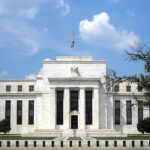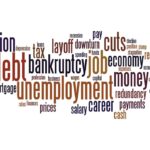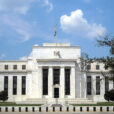

The story this morning is clearly the stunning rise in the price of Alphabet (GOOG, GOOGL). It’s higher for the correct reasons: solid earnings and returning money to shareholders. Enthusiasm about artificial intelligence certainly played a role, but a manufacturer of boring widgets would rally if it could show revenues rising 15%, profits up 36% (both soundly beating estimates), initiate a dividend, and buy back $70 billion in shares using free cash flow.We noted yesterday that we saw increased risk aversion in both GOOG and Microsoft (MSFT). The latter is also up on solid earnings, though not nearly as spectacularly as the former. The takeaway from the options market activity ahead of major tech earnings this week is that options traders were excellent contrary indicators. We noted on Tuesday that we saw unusual levels of risk aversion ahead of Tesla’s (TSLA) earnings, and that stock subsequently rallied by double digits in spite of missing on a wide range of metrics. On Wednesday, we saw only slight risk aversion ahead of Meta Platforms’ (META) earnings, and that proved far from sufficient. And of course, yesterday’s drop in META and early dip in the broad market got traders nervous about yesterday’s upcoming MSFT and GOOG. No need for nerves, though the increase in implied volatility in GOOG proved to be warranted by today’s pop.GOOG’s 10% rise gives it a market capitalization of over $2 trillion, joining MSFT, Apple (AAPL), and Nvidia (NVDA) in that exclusive club. But here is the crazy part that is unique to megacap tech stocks: that 10% jump means that the combination of GOOG and GOOGL added about $200 billion to its market capitalization today. For some perspective, that’s roughly the market cap of Disney (DIS) or McDonald’s (MCD). Perhaps we should start measuring these big moves in terms of MCDs. When META rallied 20% after its Q4 report in February, it added about 1 MCD to its market cap. Yesterday, when it fell -10.5%, it lost about $100 billion, or about half an MCD, or about two Super Micro Computers (SMCI). We can play around with the yardstick, but I hope you get the point. The megacap stocks are so enormous that when they have significant moves, they can swing their market caps in magnitudes of other major companies.The other item we touched upon yesterday was the bond market’s seemingly perplexing reaction to a significantly weaker-than-expected Q1 GDP report. The reading of +1.6% was far below both the 2.5% consensus and last quarter’s 3.4%.In theory, bond yields should fall on signs of a weaker economy. Instead, they rose because the Core PCE Price Index rose 3.7% on a quarterly basis, above the 3.4% consensus and last quarter’s 2.0%. Higher than expected prices, combined with weaker than expected economic growth raised fears of stagflation. That is a nasty combination, and certainly unfriendly for markets. A slower economy is a headwind for corporate earnings while the sticky inflation makes it difficult, if not impossible, for central banks to cut rates. Considering that we came into the year with market expectations for the mutually exclusive combination of a solid economy and several rate cuts, it was encouraging to see stock prices rise as economic health diminished both the need for and likelihood for those cuts. Now we may find ourselves in the opposite situation, which is unfortunately quite possible. Today’s PCE Core Deflator report, the Fed’s preferred inflation measure, eased some, but hardly all of those concerns when the monthly reading showed the expected +0.3% rise. The annual increase was 2.8%, slightly above the +2.7% that was expected, but today’s monthly reading means that when we annualized the most recent three months, a measure that many economists prefer, it shows an increase of +3.6%. For those keeping score, that’s substantially above the Fed’s 2% inflation target. Next week’s FOMC meeting will give us a better sense of the Federal Reserve’s intentions. As of now, there is almost no expectation for a rate move, while the likelihood for June is down to 12.5% according to Fed Funds futures. A full hike isn’t priced in until November, after the upcoming election. Things have changed in the past few months, but the tone of the equity market mostly has not. Good earnings from key companies can forestall changes in sentiment.More By This Author:Zuck Says the Quiet Part About AI Aloud. Plus MSFT And GOOGAll Eyes On Tesla Earnings Today Monthly Expiration To Traders: “Remember Me?”















